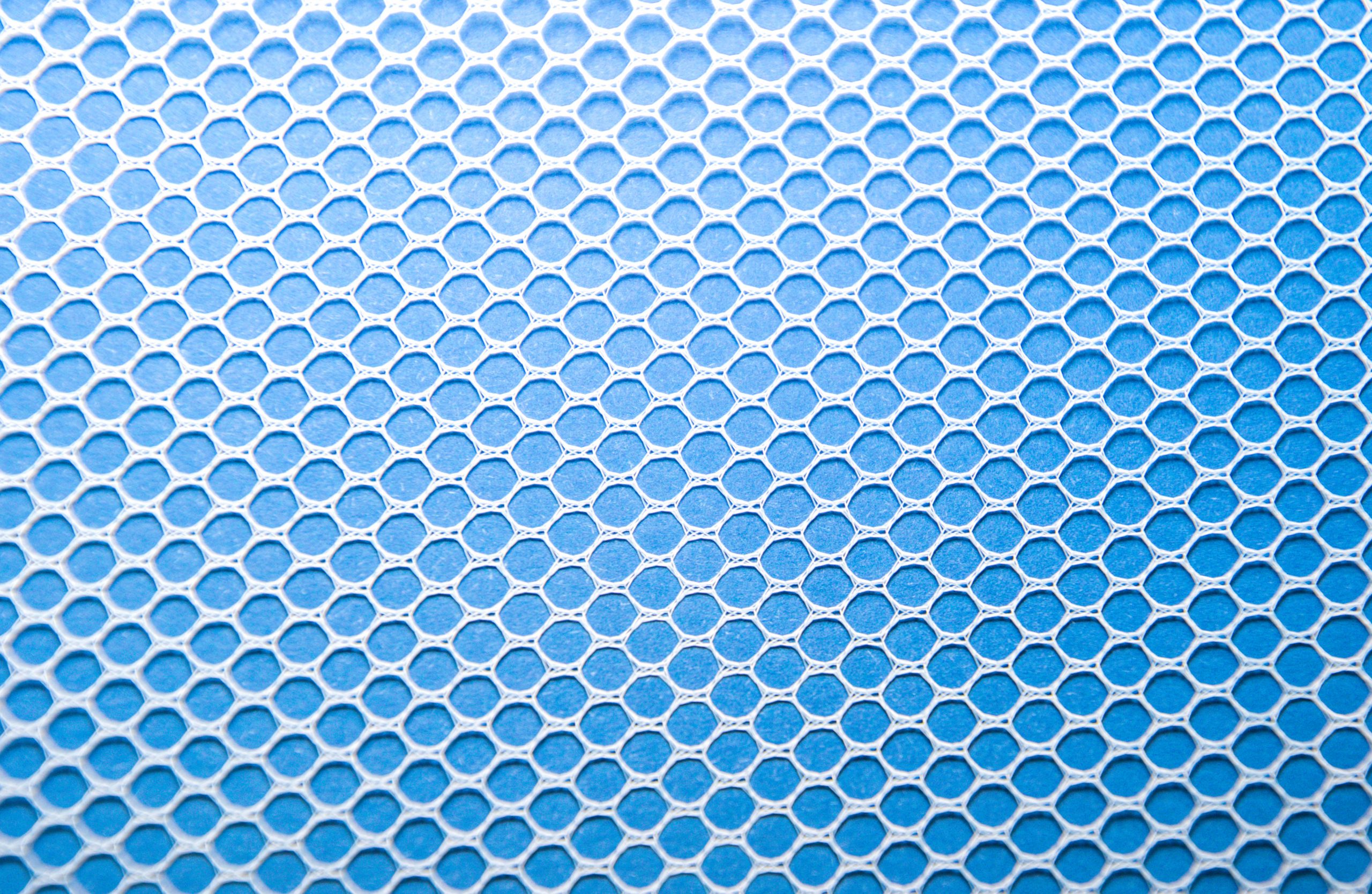Vaginal mesh implants: The biggest medical scandal of our generation
While the vaginal mesh scandal flew under the radar for an astonishing amount of time, the media is finally bringing this important issue - and its victims - to the forefront.

The controversial implants are used by medical professionals to treat stress incontinence and pelvic organ prolapse, both of which can occur after childbirth.
They're inserted into the vagina from the abdomen, used as an alternative for more invasive surgery and touted as the 'better option' by the medical industry.
But there's a darker side to the mesh story, with many women left in excruciating pain, suffering long-term health problems as a result of being fitted with them. However, on Tuesday (3rdMarch) a small victory was achieved. An Australian court ordered vaginal mesh implant manufacturers, Johnson& Johnson to pay three women $2.6 million collectively in compensation, on the grounds that the company had misled patients and surgeons about the risks of the implants.
The landmark case has paved the way for compensation for victims of these dangerous vaginal mesh implants, as 1,350 other women in Australia are also launching legal cases against the company. Johnson& Johnson are also facing similar law suits in Europe, Canada and the US for negligence, as they put these implants on the market before thorough testing.
This comes as media attention has recently been increased around the issue after the announcement last month, that London Mayor candidate Professor Sue Black has been forced to step back from the race due to health complications as a result of vaginal mesh. She was the Women's Equality Party candidate, and admitted that, in her words, the "cowboy medical treatment" has left her "with complications worse than the symptoms the mesh was meant to treat'.
In some tragic cases, women's experiences with vaginal mesh have even been fatal.
The original mesh victims
The vaginal mesh scandal claimed its first life in 2017. Canadian woman Chrissy Brajcic, who actively campaigned against the implants, died from sepsis from her own implant, after suffering problems for four years. The 42-year-old mum-of-two had set up a campaign to raise awareness of implant issues, after experiencing them herself after giving birth in 2013.
Sign up for the woman&home newsletter
Sign up to our free daily email for the latest royal and entertainment news, interesting opinion, expert advice on styling and beauty trends, and no-nonsense guides to the health and wellness questions you want answered.
Despite having the mesh removed due to nerve damage, Chrissy experienced continual urinary tract infections and was readmitted to hospital this October, where she died weeks later.
How many women have suffered due to vaginal mesh?
The Washington Post reports that as of January 2019, 3 - 4 million women have been fitted with the mesh worldwide, and of that number, around 150,000 - 200,000 have suffered complications.
In January 2017, UK hospital figures obtained by Sky News suggested that almost 10 per cent of women suffer complications following their treatment. At the time, urogynaecologist Sohier Elneil told Sky News, "It's a huge problem. I think it's bigger than Thalidomide, because the numbers of those affected are much more. And if we look at the problem globally then it's worse than the metal-on-metal hips and the PIP scandal as well."
For its victims, the negative effects of vaginal mesh have been life-changing."You spend your day thinking that the best way to get through the day would be to drug yourself up,"said Stella Channing, one woman campaigning against vaginal mesh, who was fitted with an implant herself seven years ago in Australia.
"You take pain killers and then take sleeping tablets, so that you can try and escape the raw burning pain and the ongoing nerve pain that makes you writhe in agony."
Why is vaginal mesh proving so harmful?
Kath Samson, founder of Sling The Mesh, a group campaigning to ban vaginal mesh, argues that the problem is largely down to a 'one for all' mentality.
"For incontinencemeshslings in the UK the surgeon societies are saying it is an effective treatment for 'appropriately selected women', but we say who is an appropriately selected woman?" Kath told us. "We have women of all ages, sizes, races, some smoke some do not - there is no way of telling who will suffer. It truly is Russian roulette. How can you pick who is a good candidate?"
Kath had the operation herself in 2015 to treat minor stress incontinence, and was told the procedure was "a very simple and quick fix; perfect for busy working mums to be back at their desks in a week, with the risks very much downplayed". However, she later reported feeling an intense burning and pain, alongside bruising. It was this painful experience that inspired her to start the campaign.
The backlash against vaginal mesh
Back in April 2017, BBC's Victoria Derbyshire reported that over 800 women were suing the NHSover the implants, following claims that the procedure has caused them irreparable damage, and horrendous side effects such as cutting, debilitating bleeding and pain, and the inability to have intercourse.
The women suing are levelling their criticism in particular at huge company Johnson and Johnson, who are one of the largest producers of the implants.
And cases aren't just mounting in the UK. Huge court cases have been taking place across the world. In Australia, the Australian Pelvic Mesh Support Groupcaught the media's attention across the globe after they released a series of statements from women, expressing their outrage over how they have been treated by doctors regarding their complaints.
Women across the media and social media have shared their horror too, at the awful side effects of mesh.
What exactly are the effects of the implants?
Pain and cutting are not the only terrible side-effects of the implants. Some women report that the mesh implants protrude so much that they've even damaged their partner during sex (as well as their own anatomy). Others have revealed that they are now unable to work and, for some sufferers, even walking has become a struggle.
Dr Elneil, who has worked with various mesh victims, told the BBC about the affected patients she has seen. She said, "They become so incapacitated that many of them are either walking by crutches or sitting in wheelchairs and perhaps more dramatically so, they become unable to look after their families."
MORE:We asked menopause experts about HRT alternatives following news of a national shortage
"Unfortunately, they're incredibly difficult to remove because tissue grows around the vaginal mesh, meaning that although women are told they're not permanent, they're often almost impossible to get rid of."
For Stella, the mesh implants are a life sentence - and she can't see how her issues will ever be resolved. "Most people want an answer as to what the prognosis is. People see ill health as, are you going to get better, or are you going to die? They can prepare for both.
"For themeshinjured, it is a life of non-stop chronic, debilitating pain, that does not go, does not heal and most likely will not bring imminent death, just a lingering of life that is so hard to bear."
Could a new vaginal mesh material be the answer?
Some positive news on the vaginal mesh scandal hit headlines recently, after a new type of mesh material was successfully trialled and quickly hailed as the 'answer' to the mesh crisis by the media.Scientists at the University of Sheffield claimed that, following seven years of research, using polyurethane rather than polypropylene would limit the procedure's damaging side effects. They claim that the new material has a "likeness to human tissue".
However, many have reservations about this new development, including Kath of Sling The Mesh, who strongly disputes that this is any kind of vaginal mesh 'breakthrough'.
"Researchers at the University of Sheffield say they have created a newmesh- what a lot of rubbish! They are still using plastic! This time though it is not polypropylene it is polyeurethane. Still plastic," she told us.
"They are spinning it with collagen. All they have done so far is test it in chicken embryos. How on earth can they celebrate a newmeshbased on some weak short term trials on chicken embryos. How on earth can that equate to being OK in a vagina?"
What's being done about vaginal mesh?
The recent legal action shows promising progress in compensating those who have suffered with the implants.
And while it may be a slow process, Sling The Mesh are making real progress in changing the law around vaginal mesh implants.
In 2018, NICE (National Institute for Care and Health Excellence), urged that vaginal mesh should only be used as a last resort in cases of urinary incontinence and pelvic organ prolapse. And other developments are underway - see the latest updates here. However, there are still hurdles to move past. Recently, the Victoria Derbyshire show reported that dozens of women who were told they were having the mesh fully removed have found that some material has been left inside them.
For Kath, steps to prevent mesh casualties need to be put into motion as early as possible.
"I think girls need to be educated from a young age about doing pelvic floor exercises, maybe in secondary school PE classes even - withouttheboys of course who would laugh. Butthey need to understand how important it is to look aftertheir core pelvic muscles.Alsothere needs to be better education around delivery.
"There is a lot of talk atthemoment about forceps delivery causing problems of SUI and prolapse later. There needs to be better care after a woman has given birth all round. 50 years ago for example most mums gave birth in their local nursing home and stayed resting for 2 weeks., Now women are up and out and back home within a couple of days which puts unnecessary strain on their pelvic floors."
"Surgeons must offer women natural tissue repairs instead of pushing mesh. And women need to know the terrible life changing risks and not be so quick to go under the knife for a mesh implant."
Amy Hunt is an experienced digital journalist specialising in homes, interiors and hobbies. She began her career working as the features assistant at woman&home magazine, before moving over to the digital side of the brand where she eventually became the Lifestyle Editor up until January 2022. Amy won the Digital Journalist of the Year award at the AOP Awards in 2019 for her work on womanandhome.com.
-
 We thought Michelle Monaghan looked incredible in The White Lotus, now her makeup artist has finally told us why
We thought Michelle Monaghan looked incredible in The White Lotus, now her makeup artist has finally told us whyThat finale left us with so many questions - and they're mostly about Michelle Monaghan's fresh complexion...
By Naomi Jamieson Published
-
 Forget-me-not blue is the pastel Duchess Sophie always comes back to - it might've overtaken pistachio as our favourite this season
Forget-me-not blue is the pastel Duchess Sophie always comes back to - it might've overtaken pistachio as our favourite this seasonThe royals love wearing a range of colours for engagements and visits, but there are a few hues that each of them gravitate towards the most.
By Emma Shacklock Published
